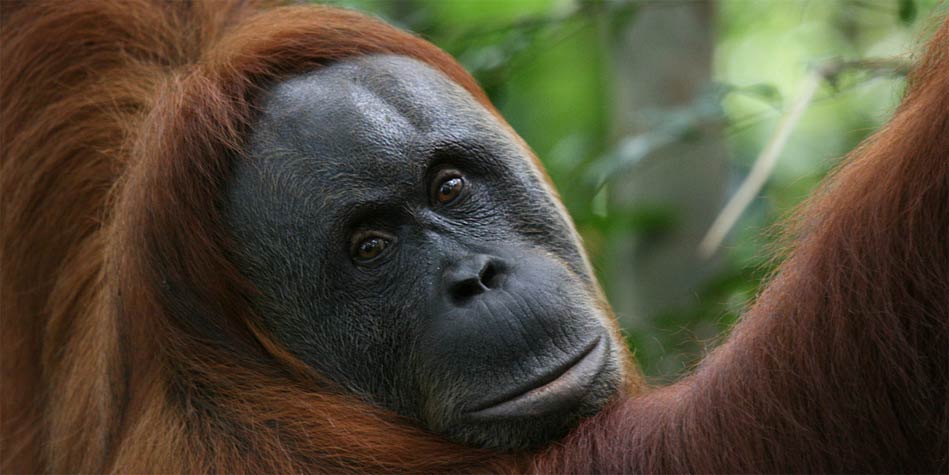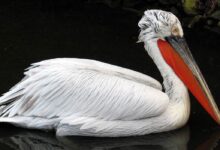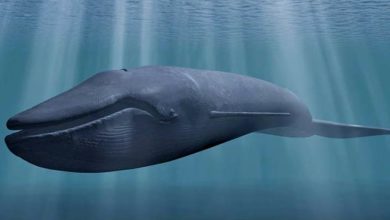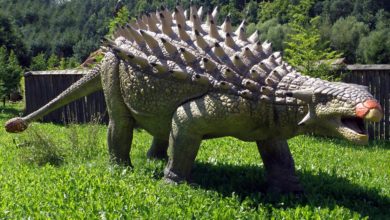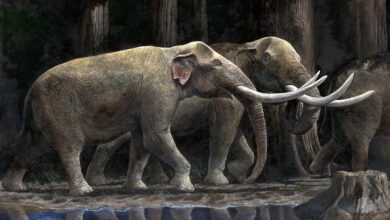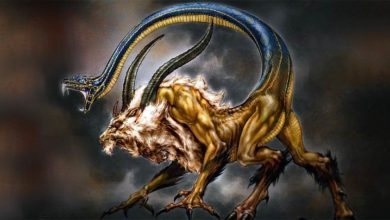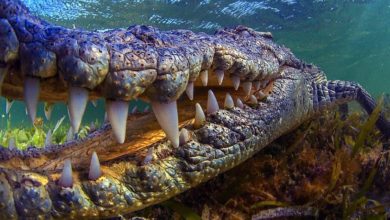Orangutan (Pongo) – a forest man
The Malay word “orangutan” (Orang Hutan) literally means “man from the forest”. It turns out that this name is very accurate, because these long-haired, orange-colored and extremely intelligent primates have much more in common with a human that it seemed. So what is worth knowing about our forest cousins, which use large leaves of trees as umbrellas?
Classification
- Kingdom: Animalia
- Class: Mammalia
- Order: Primates
- Family: Hominidae
- Genus: Pongo

Species and places of occurrence
Orangutans can be found exclusively on Sumatra and Borneo. Two groups living there were previously treated as subspecies. Today they constitute separate genera:
- Bornean orangutan (Pongo pygmaeus)
- Pongo pygmaeus pygmaeus – northwest populations
- Pongo pygmaeus morio – east populations
- Pongo pygmaeus wurmbii – southwest populations
- Sumatran orangutan (Pongo abelii) – northwest of Lake Toba
- Tapanuli orangutan (Pongo tapanuliensis) – in Sumatra south of Lake Toba

Characteristics
Anatomy and physiology
Orangutan has a big, massive body, thick neck, very long and strong arms and short, bowed legs. In contrast to some other species of apes, it does not own a tail (what is typical in the case of Hominidae). A majority of orangutans’ body is covered with long, red-brown thick hair. An exception is a face, which only in a few males is covered with small hair, reminiscent of beard and moustache.
Males – characteristic features
Dominant males, in contrast to non-dominant males, own large cheek pads, which indicate their power.
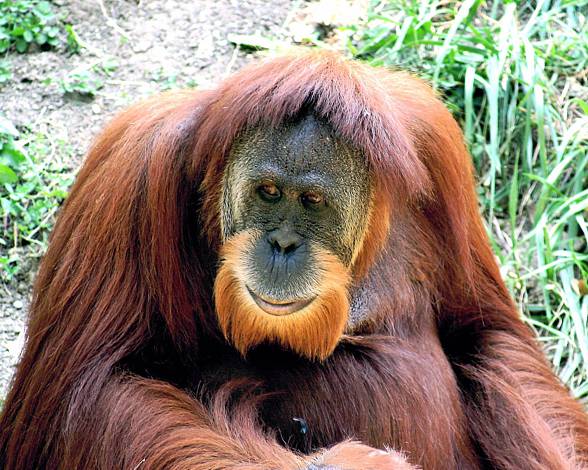
Arms and feet
Orangutans’ arms are similar to humans’ arms. They consist of four fingers and opposable thumbs. Their feet look just like the humans’ as well. They have four rounded toes and opposable big toes. Thanks to such body structure, they can catch things with their hands and feet. They can as well walk easily on the trees, where they spend most of their time.

Lifestyle
Orangutans spend most of their time on the trees, what cannot be observed in the case of any other hominids. They may be found in the mountains and in the swamps. They also live in the meadows, farmlands or gardens.
The main enemies of orangutans are tigers, hence it is much easier to find a Bornean orangutan in the lowlands, because this species of predators does not occur in Borneo.
Most of their time these great monkeys spend on the search for nutrition, rest and travel. Morning hours are usually the time for food, afternoon for relaxation, and evening for movement (as we envy them:)).
A majority of their time orangutans spend on looking for food, resting and traveling. Morning hours are usually the time for food, afternoon for relaxation, and evening for movement (we are so jealous of that 🙂 )
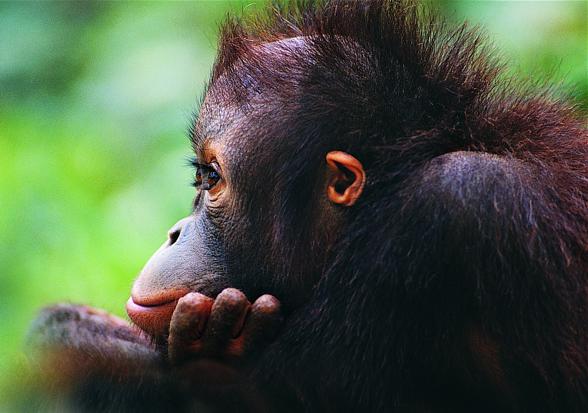
Diet
Orangutans are omnivorous, however, they feed mostly on plants. They may eat:
- fruit
- leaves
- seeds
- sprigs
- flowers
- insects
- small mammals
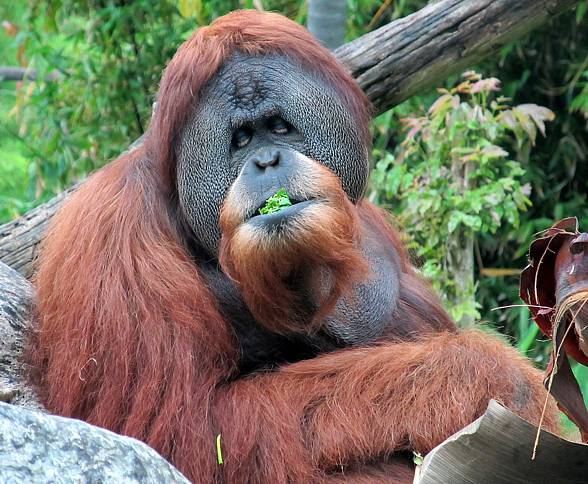
Orangutans’ social structures
Orangutans lead much lonelier life than other apes. However, it concerns rather males or independent young specimens. Females create the strongest bonds with their offspring, which stay with them for even 8 years.
Orangutans give birth quite rarely – once in several years. The pregnancy lasts 9 months, just like in the case of humans. Usually, only one juvenile is being born within a litter.
The father plays practically no role in the upbringing of small orangutans – the female is responsible for the creation of the family.
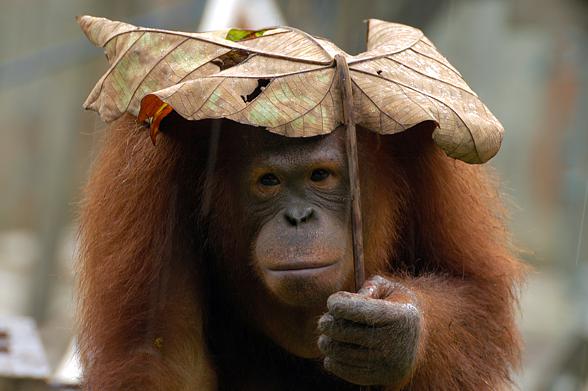
Communication or linguistic skills?
Orangutans communicate with each other using different sounds. Males may deliver long monologs in order to attract females or to improve their position among other males. Both males and females try to scare the opponent with low, throaty sounds. They express their anger by sucking the air through the clenched mouth.
Orangutans also have certain linguistic abilities. The effect of research on this issue in the 1980s was to teach an orangutan female 30 symbolic signs for communication.
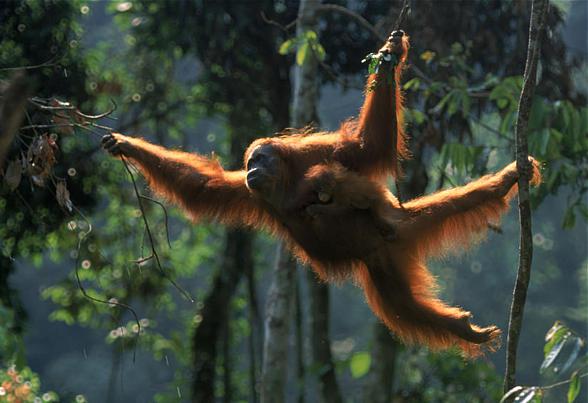
Outstanding intelligence
Orangutans are very intelligent animals. It was discovered in the 1980s that they could use different tools when seeking food. They can as well use tools in a creative way, for example, they use leaves as umbrellas. Experiments suggest, that they can figure out some invisible displacement problems with a strategy.
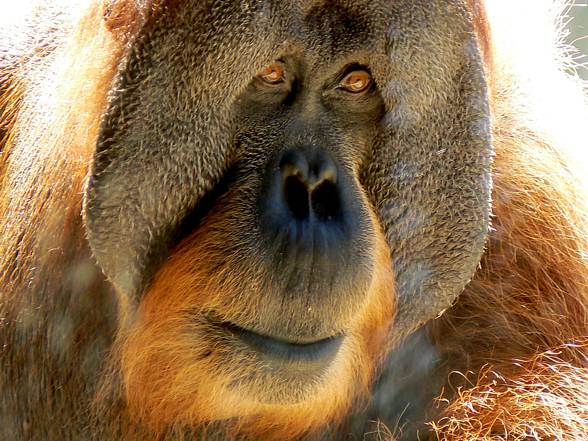
Danger of extinction
Unfortunately, those amazing apes are endangered species. The situation is extremely bad on Sumatra where only 7,300 pongo abelli live. Bornean orangutan’s status is a bit better as its population amounts 69,000.
Orangutans’ extinction is triggered mainly by illegal deforestation, including the one performed on the territory of National parks.
Apart from that, hunting for young orangutans is common practice. In order to catch them and sell them, poachers kill very often a female, which protects its offspring.
Population
| Name | Region | Population |
| Sumatran orangutan (Pongo abelii) | Sumatra | 6,667 |
| Tapanuli orangutan (Pongo tapanuliensis) | Sumatra (Lake Toba region) | <800 |
| Bornean orangutan (Pongo pygmaeus) | Borneo | |
| Northeast Bornean orangutan (P. p. morio) | Sabah | 11,017 |
| Northeast Bornean orangutan (P. p. morio) | East Kalimantan | 4,825 |
| Central Bornean orangutan (P. p. wurmbii) | Central Kalimantan | >31,300 |
| Northwest Bornean orangutan (P. p. pygmaeus) | West Kalimantan and Sarawak | 7,425 |
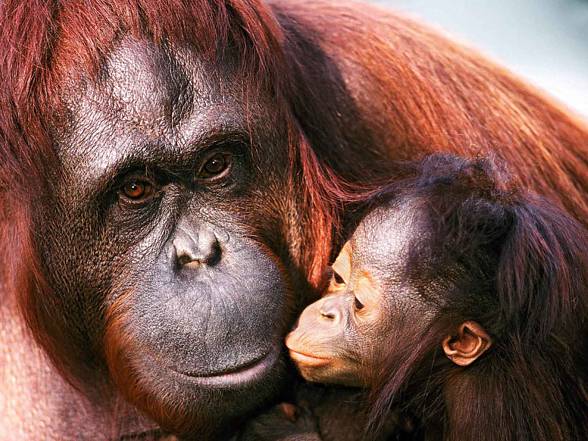
Dimensions, weight, and lifespan
Orangutan (Pongo)
Among the orangutans there is a significant sexual dimorphism – females are up to 50 cm (19.7 in) smaller and even 75 kg (165 lb) lighter.
- Height:
- males: 175 – 180 cm (69 – 71 in)
- females:127 – 130 cm (50 – 51 in)
- Weight:
- males: 120 kg (264.5 lbs)
- females: 45 kg (99 lbs)
Arms span of an adult male may reach up to 2 m (79 in), which is more than its height. The record individual had 225 cm (87 in) of arm span.
Orangutans live quite long. In freedom, they live approx. 40 years and in the caption, they may live even 60 years.
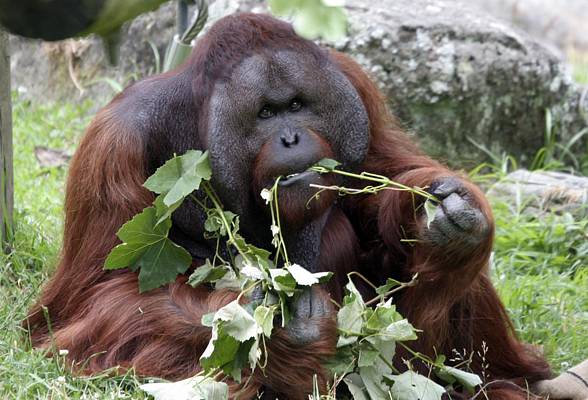
Orangutan – curiosities
- Orangutans are among the most friendly and gentle apes.
- Males, which are by nature loners, to scare away all living creatures in the area, can emit a sound that can be heard at a distance of up to 2 kilometers (1.2 mi).
- Orangutans’ arms are so long that they practically reach the ground when they are standing upright.
- Orangutans cannot swim, but they were once observed wading in the water.
- Their senses are very similar to humans’ senses. These are sight, smell, taste and touch.
- They are very empathic. Wild individuals often approach centers for orphaned youth run by people, establishing contact with small orangutans. In this way, they help them adapt to life in freedom.
- Orangutans are the least aggressive among primates. They have a friendly attitude.
- Their biggest natural enemies are Sumatran tigers.
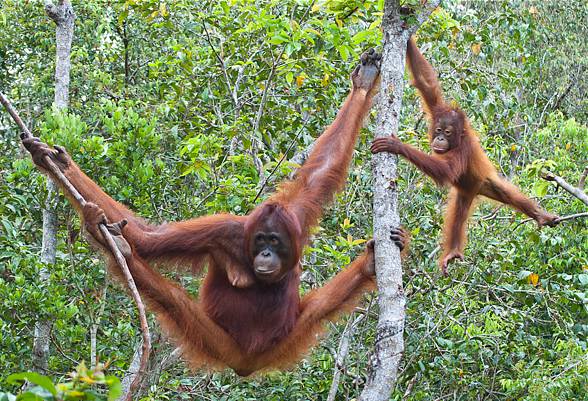
Recommended
- Bili apes – lion killers
- Bigfoot
- Orang Pendek
- Gigantopithecus
- Yowie – Australian Yeti
- Gelada
- Fastest animals

